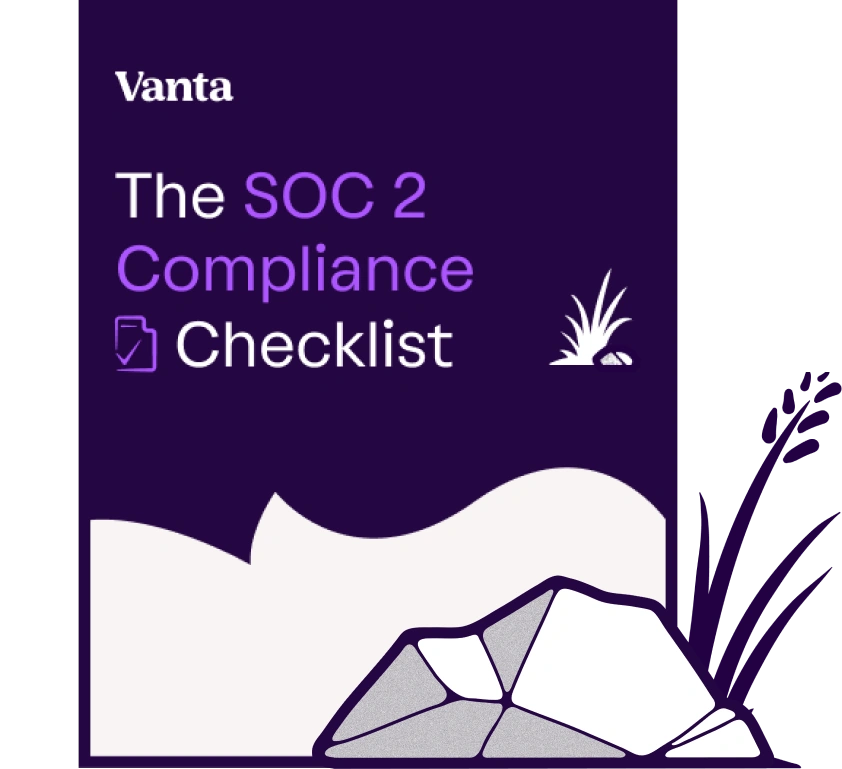Share this article

5 practical tips to navigate AI, security, and compliance in healthcare
Accelerating security solutions for small businesses Tagore offers strategic services to small businesses. | A partnership that can scale Tagore prioritized finding a managed compliance partner with an established product, dedicated support team, and rapid release rate. | Standing out from competitors Tagore's partnership with Vanta enhances its strategic focus and deepens client value, creating differentiation in a competitive market. |
It’s no secret that the healthcare industry has a fraught relationship with cybersecurity. Despite being highly regulated, healthcare companies are hot targets for hackers. The wealth of patient data healthcare companies often possess sells for a premium on the dark web, and hackers have an opportunity to yield high ransom payouts due to the criticality of healthcare systems and services. After all, lives may truly be at stake amid a healthcare breach.
Historically, healthcare companies are also seen as easy targets because of outdated technology and systems. It’s not that upgrades aren’t a priority—it’s just extremely difficult to upgrade systems in an environment where you can’t risk any downtime of critical services.
The proliferation of AI is only making things more complicated. Healthcare companies must balance AI innovation with risk mitigation to provide the best solutions and care without compromising security.
Balancing innovation and risk management
The potential applications of AI in the healthcare industry are endless and exciting. It’s not hard to imagine a world where AI can enhance our ability to build medical devices, increase the speed at which we bring new vaccines to market, or help analyze large amounts of health data to predict disease outbreaks. On the clinical side, AI can significantly reduce the burden of documentation, analysis, and diagnosis, giving medical professionals more time to devote to patients.
Across healthtech companies, hospital systems, research facilities, and more, there is a need to adopt, understand, and innovate with AI to push the industry forward. But to do so, organizations must ensure they have a strong security foundation in place—so innovation doesn’t increase the (already extensive) risk profile that healthcare companies carry.
Here are five practical tips to get started:
1. Understand your risk landscape
A big security mistake a lot of companies make is trying to bite off more than they can chew. They attempt to implement security controls across their whole environment, without a strong understanding of what they are actually trying to protect. This is especially detrimental for organizations with limited technical or financial resources, which is often the case in the healthcare industry.
The best approach is to first isolate and understand what you’re trying to protect and why—are you concerned about patient privacy, AI integrity, or something else entirely? This will dictate where you should focus the bulk of resources.
“You don’t want to build a barbed wire fence around an empty plot of land. There’s nothing to protect there. What you want to do is build a fence around the scope that you know needs to be protected and governed.”
Faisal Khan, GRC Subject Matter Expert at Vanta
2. Practice data minimization
A lot of risk is rooted in the impact of compromises to the confidentiality, availability, or integrity of data. And the more data you have—the more risk you introduce. For healthcare companies, this is a big concern due to the amount and nature of patient data and the presence of PII.
Practicing data minimization, a core tenet of regulations like GDPR, is one way to reduce risk. It’s a privacy principle that limits the collection, processing, and storage of data to only what is necessary for a specific purpose. Practice data minimization where you can and think through your data flows and processing activities to find opportunities to minimize the spread of data (to vendors or other parts of your environment). If data really needs to go to a vendor, make sure to have agreements in place to ensure protection and shore up your supply chain.
3. Tackle compliance methodically
Adhering to industry frameworks and achieving compliance certifications is one way to gut-check your security posture and ensure you have all the right systems and controls in place. In the highly regulated healthcare industry, it’s also mandatory.
Prioritize compliance priorities by focusing first on the “musts” and then on the “shoulds.” Musts are things like HIPAA, which is a legal requirement. The shoulds are things that will further bolster your posture or build trust with customers, like SOC 2. HITRUST CSF is another important should for healthcare companies. Where HIPAA is an attested framework, HITRUST is audited. It’s a good safety net to ensure your execution of HIPAA compliance isn’t just a check-the-box exercise, but rather something that actually benefits your business.
Compliance done right is more than a regulatory hurdle—it’s a way to prove your security posture proactively. In healthcare, where trust and credibility are mission-critical, demonstrating that you meet and exceed compliance expectations sends a powerful message to customers, partners, and investors. Building trust through compliance can accelerate sales, strengthen partnerships, and ultimately set you apart.
“When we’re looking at GRC frameworks like HITRUST or NIST or ISO, I’m always evaluating what the cost is to implement and maintain versus the benefit. It’s really nice to have these frameworks…but it is really expensive to maintain some of these…We’re constantly looking at that cost-benefit analysis.”
Michael Hensley, Head of Cybersecurity at Modern Health
4. Implement automation and continuous monitoring
Don’t underestimate the cost and time associated with maintaining compliance year after year. It’s never a one-and-done process. You can significantly reduce the cost of maintenance and recertification if you invest in automation and continuous monitoring. Compliance automation reduces the burden and cost of traditionally manual tasks—like evidence collection and evaluation—and continuous monitoring helps you immediately spot any controls that fall out of compliance, so you can implement a fix before it’s too late.
Think of continuous monitoring like checking your vitals—it’s preventative care so you don’t develop issues further down the road. And it’s not just about doing occasional check-ins. The goal is to create cyber resilience so that when regulations evolve or change, your organization can be flexible and adapt quickly.
5. Consider cultural shifts required for success
To successfully monitor your vitals, security and compliance need to be embedded into your company’s DNA. One misconception about compliance and security is that it’s owned by a single team within an organization. In reality, it’s a company-wide effort. Everyone within the organization must buy in and execute on their unique role in keeping the company secure. This could be as simple as all employees completing security training—a best practice to keep your systems secure, and a requirement for many compliance certifications.
Company-wide buy-in requires a cultural shift within any organization. And it starts from the top down. Security teams can’t push out mandates and just expect success. Security must be woven into the company mission, reiterated during key company events and trainings, and reported on widely so employees understand the impact of their actions. With a robust approach, security becomes a huge differentiator for your business—it builds trust, attracts customers, and enables long-term growth and scalability.
“Navigating all these challenges within a company and really being successful takes cultural change. We have so many talks about frameworks and controls, but not enough about culture and mindset. Every control and framework—at the end of the day—is adhered to by a person, so it’s all about people. It requires cultural change, and that cultural change starts at the top.”
Joseph Berglund, Director of IT Operations and Cybersecurity at US Med-Equip
Securing the healthcare industry in the age of AI
Navigating AI innovation and stringent security protocols demands a proactive approach. By prioritizing a deep understanding of their unique risk landscape, diligently practicing data minimization, and methodically tackling compliance requirements, healthcare organizations can build a strong security foundation. Automation, continuous monitoring, and fostering a security-conscious culture across all levels will help scale that work effectively in the long term. With a focus on security and risk management, healthcare companies can embrace AI without succumbing to its inherent risks.
For more tips to navigate AI, security, and compliance in healthcare, check out our full on-demand webinar recording—featuring leaders from Modern Health and US Med-Equip.





FEATURED VANTA RESOURCE
The ultimate guide to scaling your compliance program
Learn how to scale, manage, and optimize alongside your business goals.















.png)




.png)






.svg)
.svg)
.png)
.png)
.png)